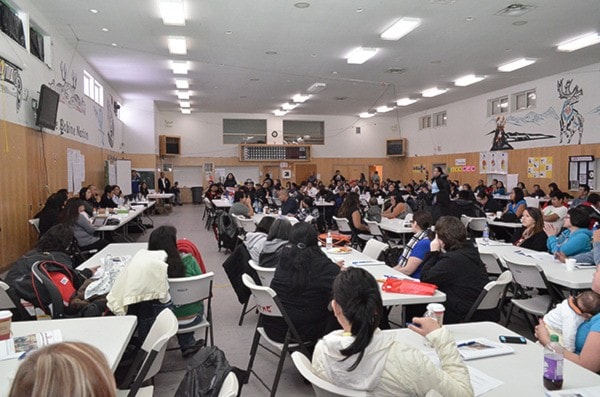After a five year hiatus, Lake Babine Nation (LBN) held its three-day AGA last week.
Chief Wilf Adam described the delay in holding the AGA as a setback due to band financial difficulties. This year’s AGA was possible because band council and management had made large strides in taking band finances in a positive direction.
"Over 400 or so of our citizens were involved over the last three days," Adam said. "We spent over $70,000 and that stayed in the Burns Lake area. It was a success with lots of interest in what LBN delivers."
Attendees of the assembly had the opportunity to listen to staff reports, and make their concerns known publicly and directly to council and staff members responsible.
Ongoing treaty negotiations suffer from conflicting claims with other First Nations regarding traditional territories, and federal and provincial governments who do not seem to recognize the territorial rights of First Nations when it comes to resource extraction and the profits it brings with it.
But LBN is receiving some economic advantage already from preliminary natural gas pipeline work in their territories. The recently completed Summit Camp, located behind the Fort Babine Lodge site, became operational on June 24, 2013.
The full-service camp has 23 rooms under contract with Spectra Energy, and 10 rooms under contract with Stantec, who is doing work related to the TransCanada Coastal GasLink project.
The camp is staffed by seven LBN members, and was built with lumber milled at the Fort Babine Sawmill.
Fred William, Fort Babine councillor, described his community’s location along the energy corridor as making it a prime location for industry to consider.
“We have industries knocking on our door,” William said. “Especially mining and pipeline companies.”
“As leaders we are making sure that a proper plan is in place to start economic adventures with the companies that are active in our area.”
The 2013 sockeye salmon harvest was a devastating blow to LBN. Only 312,327 sockeye were counted at the Babine Lake fence. A minimum of 1,050,000 are required to fulfil Skeena First Nations food fish requirements, spawning channels and wild tributaries.
On a positive note, Donna Macintyre, LBN fisheries director, noted that an unusually large return of jack sockeye (two-year old sockeye that have returned to spawning channels) was counted, at 320,783 fish.
Although jack salmon are not commercially viable, Macintyre reported that the high number typically means an extremely high sockeye return the following year.
